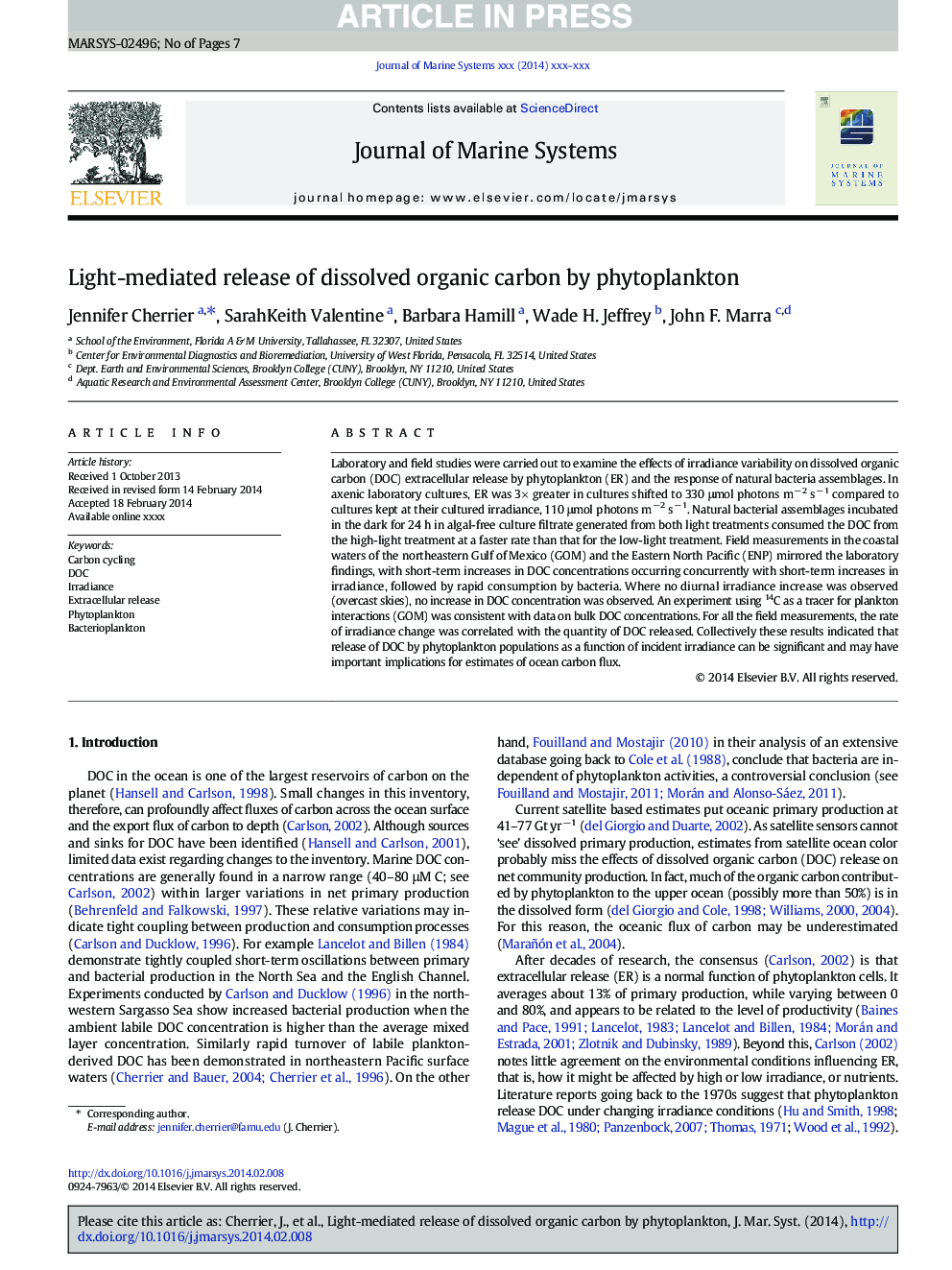| Article ID | Journal | Published Year | Pages | File Type |
|---|---|---|---|---|
| 6386772 | Journal of Marine Systems | 2015 | 7 Pages |
Abstract
Laboratory and field studies were carried out to examine the effects of irradiance variability on dissolved organic carbon (DOC) extracellular release by phytoplankton (ER) and the response of natural bacteria assemblages. In axenic laboratory cultures,  ER was 3à greater in cultures shifted to 330 μmol photons m â2 s â1 compared to cultures kept at their cultured irradiance, 110 μmol photons m â2 s â1. Natural bacterial assemblages incubated in the dark for 24 h in algal-free culture filtrate generated from both light treatments consumed the DOC from the high-light treatment at a faster rate than that for the low-light treatment. Field measurements in the coastal waters of the northeastern Gulf of Mexico (GOM) and the Eastern North Pacific (ENP) mirrored the laboratory findings, with short-term increases in DOC concentrations occurring concurrently with short-term increases in irradiance, followed by rapid consumption by bacteria. Where no diurnal irradiance increase was observed (overcast skies), no increase in DOC concentration was observed. An experiment using 14C as a tracer for plankton interactions (GOM) was consistent with data on bulk DOC concentrations. For all the field measurements, the rate of irradiance change was correlated with the quantity of DOC released. Collectively these results indicated that release of DOC by phytoplankton populations as a function of incident irradiance can be significant and may have important implications for estimates of ocean carbon flux.
Related Topics
Physical Sciences and Engineering
Earth and Planetary Sciences
Oceanography
Authors
Jennifer Cherrier, SarahKeith Valentine, Barbara Hamill, Wade H. Jeffrey, John F. Marra,
